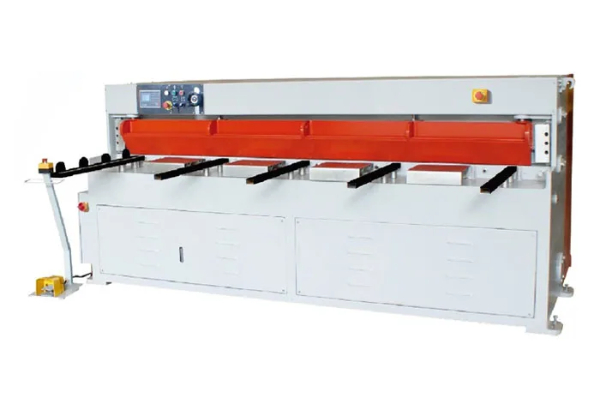
Innovating Duct Fabrication- Exploring Advanced Folding Systems
- By:Metmac
- 2024-04-30
- 371
The fabrication of ductwork, essential for distributing air in heating, ventilation, and air conditioning (HVAC) systems, has historically relied on manual processes that are time-consuming, labor-intensive, and prone to errors. However, advancements in automated folding systems have revolutionized duct fabrication, offering the potential to transform the industry with improved efficiency, precision, and productivity.
Revolutionizing the Folding Process
Advanced folding systems employ sophisticated machinery, such as CNC bending machines and folding presses, to precisely manipulate and fold sheet metal into the complex shapes required for ductwork. These systems utilize computer-aided design (CAD) software to generate detailed instructions, ensuring that folds are made with accuracy and repeatability.
Enhanced Precision and Efficiency
Automated folding systems eliminate the need for manual measuring and marking, significantly reducing the risk of human errors. The precise control of bending angles and fold radii ensures that ducts are manufactured to meet exact specifications, minimizing variations and ensuring optimal airflow performance.
Increased Productivity and Labor Savings
By automating the folding process, manufacturers can significantly increase their productivity, as machines can operate continuously and at much faster speeds than manual labor. This frees up skilled workers for other value-added tasks, leading to a more efficient and cost-effective production process.
Improved Safety and Ergonomics
Advanced folding systems reduce the need for manual handling of heavy sheet metal sheets, eliminating potential safety hazards. The automated process also improves ergonomics, reducing the risk of repetitive motion injuries associated with traditional duct fabrication methods.
Exploration of Advanced Folding Systems
The industry is continually exploring and developing new folding systems to further enhance duct fabrication. These advancements include:
Laser Cutting and Folding: Integrating laser cutting with folding systems enables more intricate and precise cuts, reducing the need for post-fabrication trimming and handling.
Robotic Folding: Robotic folding systems employ advanced robotics to perform complex folds with unparalleled accuracy and speed, increasing flexibility and adaptability.
3D Printing: 3D printing techniques are emerging as a transformative approach to duct fabrication, allowing for the creation of complex geometries that are difficult to achieve with traditional methods.
Conclusion
Innovating Duct Fabrication: Exploring Advanced Folding Systems showcases the transformative potential of automated folding systems in revolutionizing the industry. These systems offer enhanced precision, efficiency, productivity, safety, and ergonomics, driving the evolution of ductwork manufacturing towards a future of automation, optimization, and innovation.
-
Advanced Sheet Metal Rolling, Cutting, and Folding Machines for Efficient Fabrication
2025/10/22 -
High-Precision Sheet Metal Bending and Cutting Solutions for Modern Manufacturing
2025/10/22 -
High-Precision Solutions from Leading Sheet Metal Cutting Machine Manufacturers
2025/09/11 -
Reliable Sheet Metal Equipment for Sale to Support Precision Fabrication
2025/07/17
-
Advanced Sheet Metal Rolling, Laser Cutting, and Folding Machines for Precision Fabrication
2025/10/31 -
High-Performance Sheet Metal Bending and Cutting Machines for Modern Fabrication
2025/10/31 -
High-Quality Sheet Metal Equipment for Sale: Efficient Solutions for Modern Manufacturing
2025/10/31 -
High-Performance Sheet Metal Equipment for Sale: Forming and Shearing Solutions for Modern Fabrication
2025/10/22
-
A Guide to the Latest Innovations in Sheet Metal Folding Machines
2024/11/29 -
Key Features to Consider When Investing in a Sheet Metal Folding Machine
2024/11/28 -
Enhancing Precision with Advanced Sheet Metal Folding Machines
2024/11/27 -
How to Choose the Right Sheet Metal Folding Machine for Your Workshop
2024/11/26






